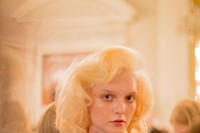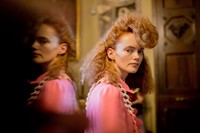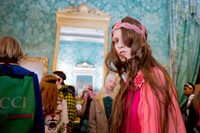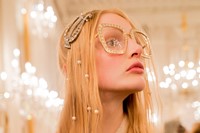Alessandro Michele’s Gucci couldn’t be mistaken for anything else. His aesthetic imprimatur, although eclectic to the point of frenzied, is nevertheless instantly identifiable. It’s an overload of the senses, an orgy of colour and embellishment that is frankly Renaissance in its richness. That isn’t a new assertion – Michele’s obsession with the past often collides the 1970s with the 1570s, a moment of Italian domination over world culture, including fashion. At that moment, all roads lead to Florence, where Gucci was founded a few centuries later and where Michele elected to show his 2018 Cruise collection for the house on Monday evening.
He made no bones about the fact that Florence was his second choice – after all it was public knowledge that permission to stage the show at his first, the Acropolis, was refused after a protracted negotiation period. Michele is, however, an eternal optimist – the collection he showed bore traces of that original intention, but had been further embellished with a rich Florentine patina until you couldn’t imagine these clothes being shown anywhere else.
“Something that I adore today is that the classical pieces of our culture, Greek and Roman, are still everywhere,” said Michele, backstage, after his show. “We didn’t get the Acropolis, but I was thinking what would be the most powerful place for that kind of inspiration. The Renaissance – that’s why I came here.”
“The Renaissance – that’s why I came here” – Alessandro Michele
Here’s a potted piece of art and culture history: after the Dark Ages, the Renaissance marked the rediscovery of classical Greek and Roman philosophy, and a flowering of art inspired by those ancient civilisations. The Renaissance also kicked on in Florence, in the 14th century. So showing there really was the next best thing to showing in the heart of Ancient Greece – the first grand-scale revival. Which is very much Michele’s bag. Best-selling, that bag is, too.
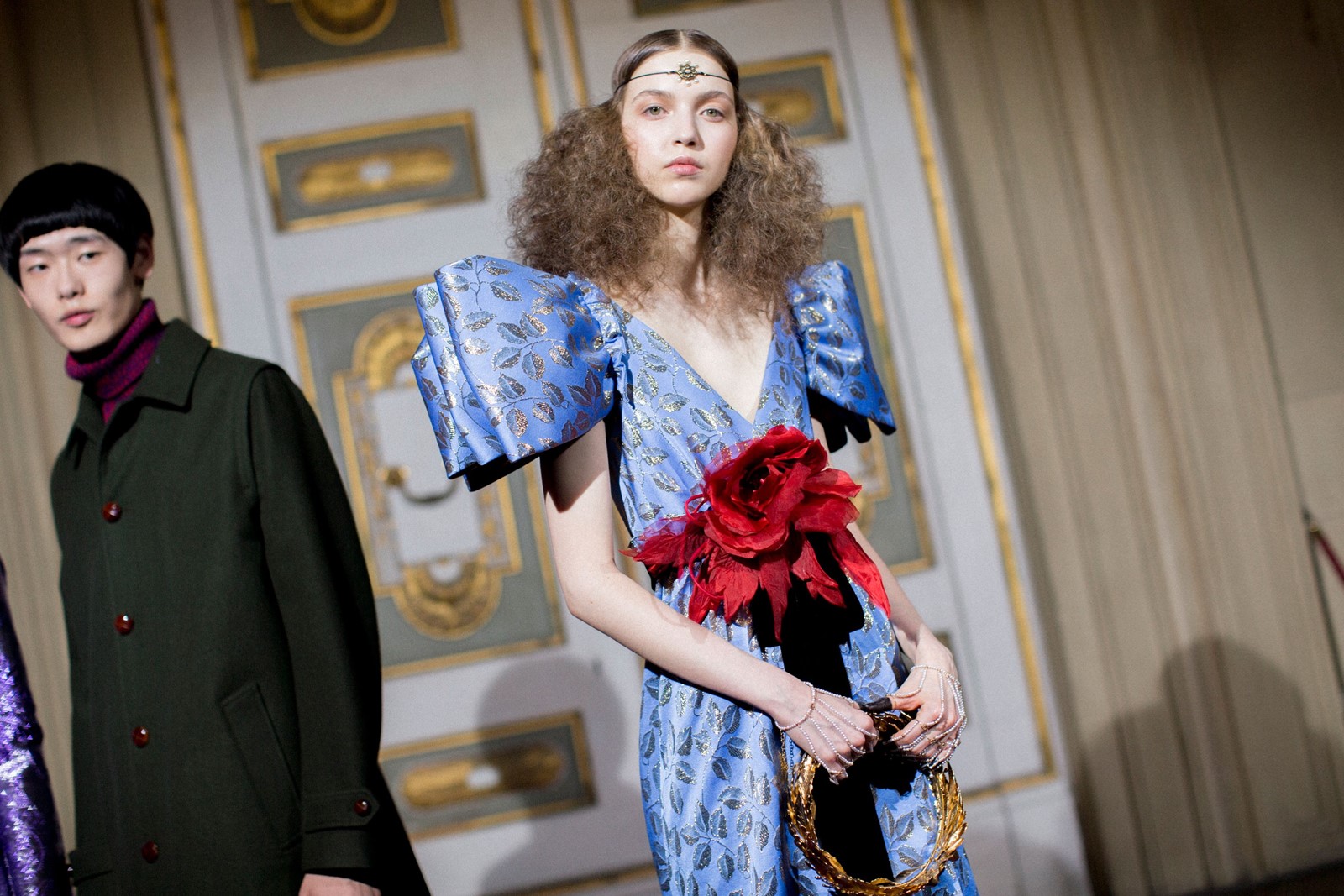
Walking through Florence, across, say, the Ponte Vecchio with its poky jewellery shops crammed with cameos and coral, you can clearly see the root of Michele’s distinct style. It’s quintessentially Italian, but a different breed to the sex-or-suits stuff we’re used to. Michele references the pile-it-on exuberance of Surrealist Elsa Schiaparelli, and the work of Robert Capucci, a Roman couturier whose intricately pleated and architecturally complex ballgowns were sometimes so vast as to be immovable. Both were present in this Florentine excursion, alongside a thick crust of 16th-century decoration – pearls circling faces reminiscent of Botticelli heroines; swathes of coloured silk flying like Raphaelite deities; latticeworks of pearls like a Bronzino, perhaps spelling ‘Guccy’, like an olde worlde misspelling. Oh, and there were trompe l’oeil sequin togas, too, clashing together Schiaparelli with Socrates. What there wasn’t was any hint of this being a ‘Cruise’ show – meaning half-hearted, at half-speed or underdesigned. It was as rich as anything Michele’s shown during Milan fashion week.
The only nod to Cruise was the slightly exotic locale – amidst holidaymakers of all nationalities, Michele staged this Gucci show in the Pitti Palace, through a strung-out series of salons so groaning with portraits by those boldface Renaissance names, barely an inch of space was left masterpiece-free. His models walked atop a mimosa yellow carpet, the audience roped off from them like art exhibits before an especially well-dressed school – or indeed, cruising tourists. But were we the artworks, or the models? The situation was probably in reverse, given the preciosity of their embellishments, furs and dribbling satins, like long-dead Italian aristocrats brought spectacularly back to life. Plus, we were poring over them, not the other way around.
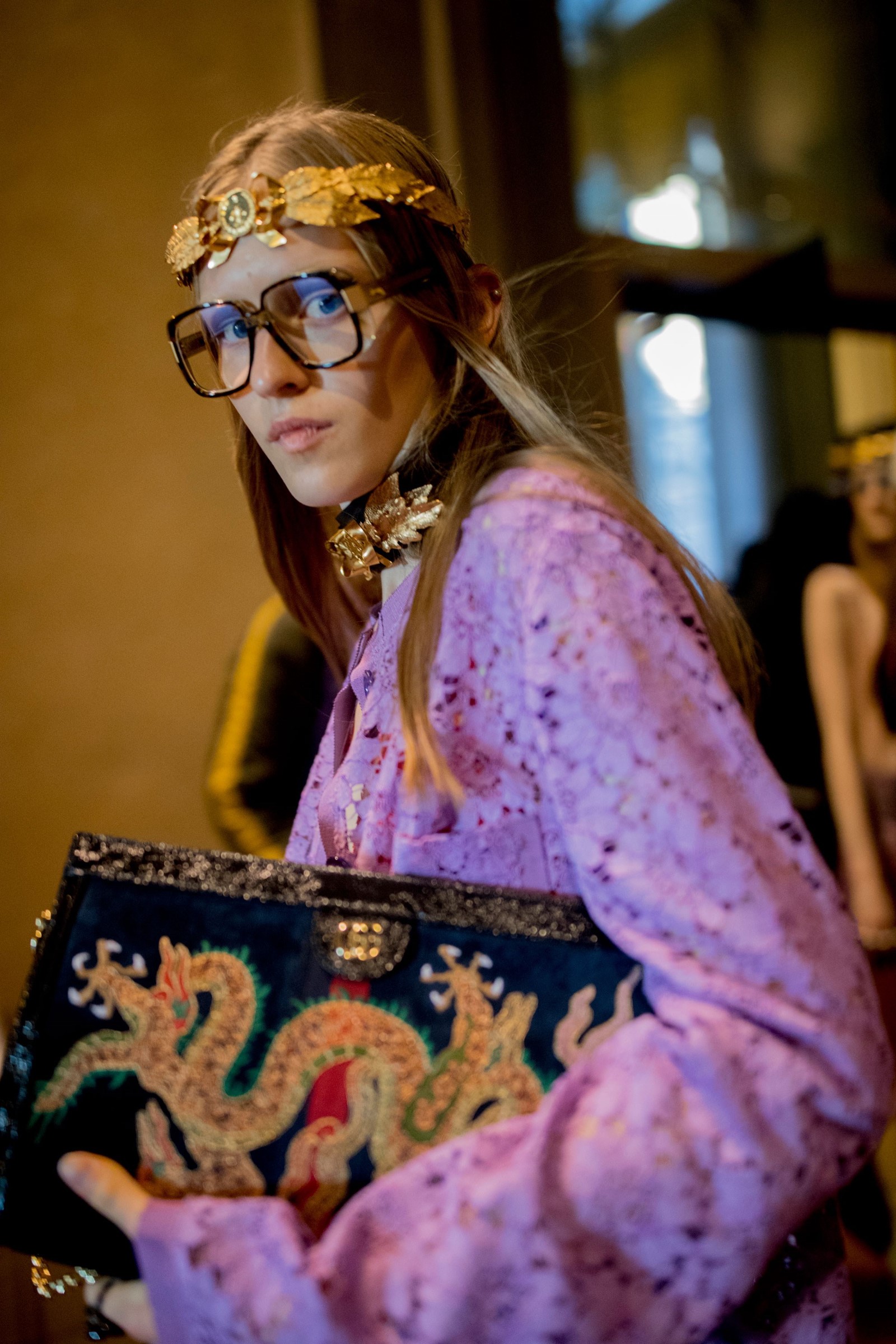
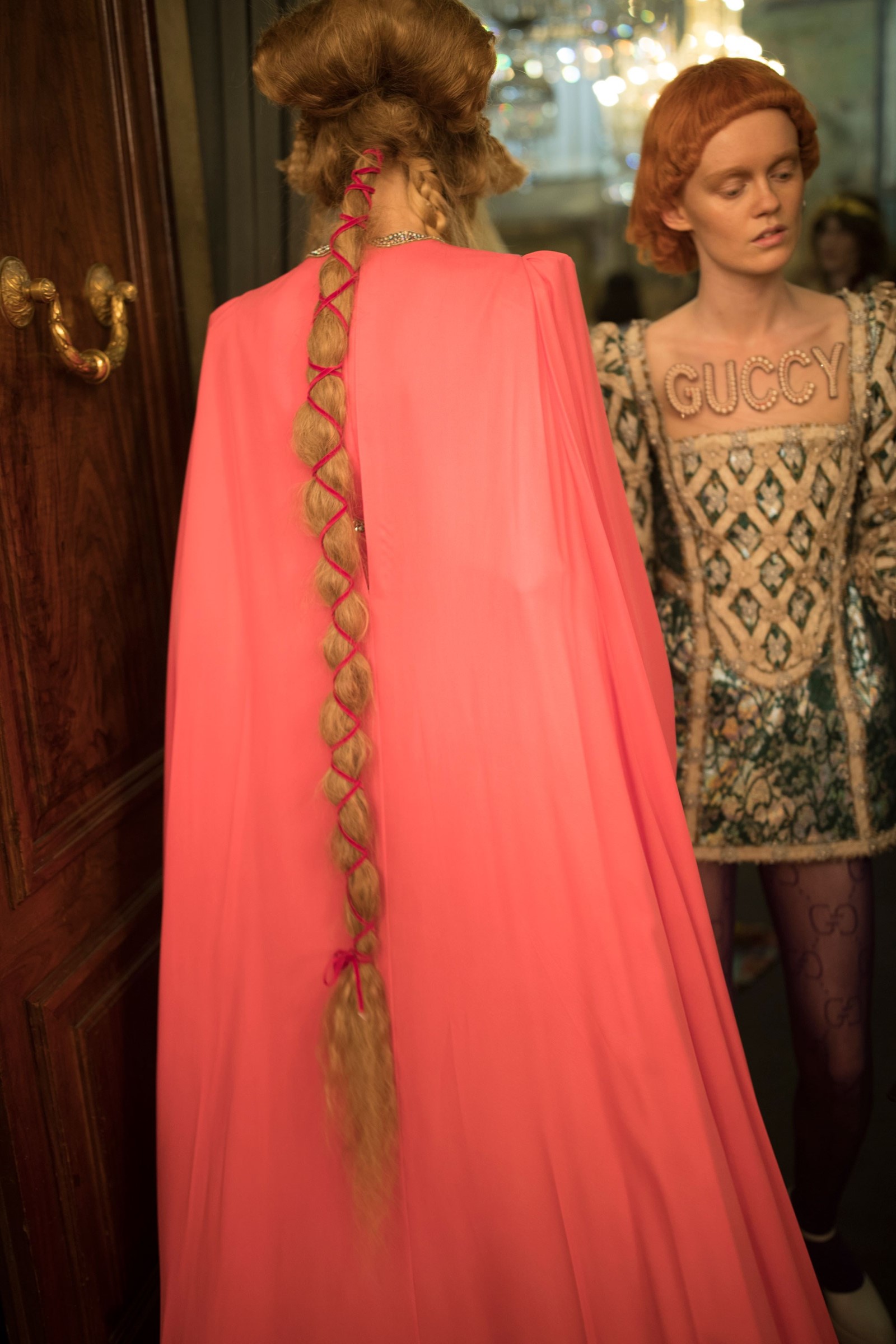
“What I am doing is much closer to this city than other moment of the company,” said Michele. “It’s a kind of Renaissance rock and roll. I feel very comfortable here.” The striking thing, however, is that Michele can make these clothes, with their pearls and buckles and bows and nods to Renaissance court attire, feel utterly contemporary and desirable. It would be easy to crosshatch a sequin dress with strips of leather and quatrefoil flowers pinpricked with seed pearls and make it look either couture or costume, neither of which feels especially wearable. But here, there’s something in the proportions (generally arresting, interesting and modern, and often overlooked due to those glittering surfaces), and in the audacity of outfit combinations (knee-high diamanté-studded Gucci logo socks, anyone?) that keeps the whole thing feeling utterly of the moment, and desirable. Never let it be forgot that it was Renaissance masters that rediscovered perspective; it’s all-important in Michele’s work too.
Eccentrico is the Italian word for it: eccentric. Incidentally, that’s derived from the Ancient Greek ékkentros, meaning “not having the earth as the centre of an orbit”. There’s nothing earthbound about what Michele does. It’s about fantasy. “It’s not by accident,” Michele mused. “Eccentricity is something that makes you feel rare.” And rare birds fly.

